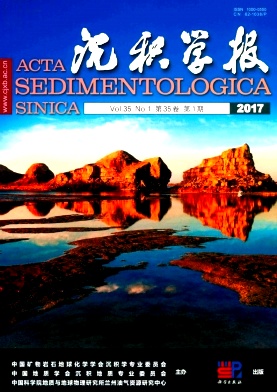The Diagenetic Evolution and Quantitative Research of Porosity in Different Grain Size Sandstones of the Lower Shihezi Formation in Linxing Area, Ordos Basin
doi: 10.14027/j.cnki.cjxb.2017.01.016
- Received Date: 2016-03-18
- Rev Recd Date: 2016-05-07
- Publish Date: 2017-02-10
-
Key words:
- Ordos /
- Upper Paleozoic /
- different grain-sized sandstone /
- diagenetic evolution /
- quantitative research of porosity
Abstract: Based on analysis on casting thin sections, SEM, cathodeluminescence, inclusion, and geochemical data, and combining with the method of statistics and calculation, we have discussed the petrologic feature, diagenetic sequence, and quantitative evolution of porosity from the different grain-sized sandstone of the Lower Shihezi Formation in the study area. This research shows that the coarse sandstone has the characteristic with high rigidity particle and the plastic debris is enriched in fine-grained sandstone. silicic cementation and carbonate cementation are enriched in coarse sandstone, medium and fine sandstone has the high content of kaolinite. On the diagenetic evolution process, the experience of diagenesis is more completely in coarse sandstone, but the fine sandstone had already become densification in period B of early diagenetic stage. The medium sandstone is the transition between the two types. The period of Permian to middle Triassic is penecontemporaneous to period B of early diagenetic stage, the dominant diagenesis is compaction, which has the greatest influence on the porosity of fine sandstone. In the late Triassic to Jurassic is the period A of middle diagenetic stage, the dominant diagenesis are corrosion and cementation. The coarse sandstone dissolution is strong, so has a higher porosity. Fine sandstone is not developed in dissolution and cementation by and large. The period B of middle diagenetic stage is developed after middle Jurassic, the dominant diagenesis is ferrous carbonate cementation. Coarse sandstone has strong cementation to reduce the porosity, but the property is still good. The final porosity is 11.07%, 6.08% and 2.60%. In conclusion, coarse sandstone has better properties because lower compaction and higher corrosion, medium sandstone is secondary formation because compaction and cementation, fine sandstone is the worst formation because of higher compaction.
| Citation: | WANG Qi, MA DongXu, YU Fang, JI HongJie, SU XuLiang, LI XiaoYan, HAO LeWei, WEI ZhongHeng. The Diagenetic Evolution and Quantitative Research of Porosity in Different Grain Size Sandstones of the Lower Shihezi Formation in Linxing Area, Ordos Basin[J]. Acta Sedimentologica Sinica, 2017, 35(1): 163-172. doi: 10.14027/j.cnki.cjxb.2017.01.016 |






 DownLoad:
DownLoad: